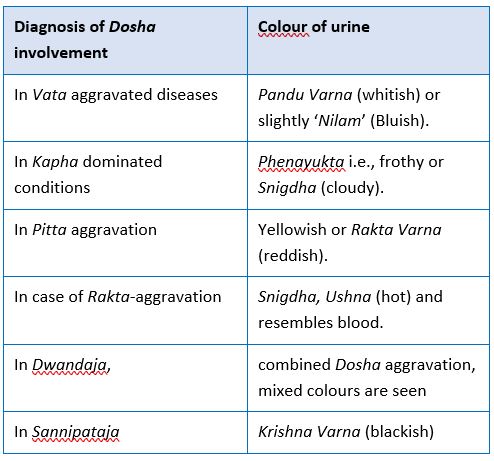A Critical Review on Tail Bindu Mutra Pariksha in Ayurveda
DOI:
https://doi.org/10.21760/jaims.9.6.27Keywords:
Ayurveda, Tail Bindu Mutra Pariksha, prognosisAbstract
Ayurveda, as a comprehensive system of medicine, goes beyond merely treating diseases; it encompasses a lifestyle that emphasizes harmony between the body, mind, and spirit. Central to this approach is the concept of disease prevention, which is considered the primary goal of Ayurvedic practice. This preventive aspect is woven into every aspect of life, including diet, daily routines, and behavior. In Ayurveda, diagnosis and treatment are not limited to just addressing the symptoms; they involve understanding the root cause of the illness and restoring balance to the individual's constitution (Dosha). Prognosis prediction, therefore, becomes crucial in determining the course of treatment and the likely outcome of the disease. Historically, prognosis prediction has been a significant challenge in medicine, and Ayurveda is no exception. However, ancient Ayurvedic texts and practices reveal a sophisticated understanding of prognosis dating back thousands of years. Tail Bindu Pariksha is an ancient Ayurvedic diagnostic method used to determine the prognosis of a disease. The term translates to Oil drop test, and it involves the use of a single drop of oil in water to predict the nature and severity of a patient's illness. This method is based on observing the behaviour of the oil drop when it is placed in water and assess the progression of diseases and predict their outcomes.
Downloads
References
Charak Samhita, P. Kashinath Pandey, Dr Gorakhnath Chaturvedi, publishing date 2020, Choukhambha Bharati academy, Varanasi ch.su.20/20
Charak Samhita, P. Kashinath Pandey, Dr Gorakhnath Chaturvedi, publishing date 2020, Choukhambha Bharati academy, Varanasi Prakashan. ch.su.1/94
Sushrut Samhita, of Susruta. Edited with Ayurvedatattva Sandipika Hindi Commentary, Notes, etc. by Kaviraja Ambikadutta Shastri Su.Su.45/218
Harita Samhita, p. Harihar prashad Tripathi, publisher: chowkhaba krishnadas academy, sanskrit text with hindi translation. Ha.Sm.19/11
Kashyap Samhita, Hindi translation with commentary edited by Nepal Raj Guru Pandita Hemaraja Sharma commentary by Shri Satyapal Bhishagacharya. Ka.Su.28
Babu Suresh. Vol. 1. Varanasi: Choukhamba Sanskrit Series Office; 2005. S. Yogaratnakara; pp. 16–9.
Chikitsasara. Chennai: Vavilla Ramaswamy Shastrulu and Sons; 1927. Puvvada Suryanarayana; pp. 9–10.
Anonymous. MSS Chikitsasara. NIIMH. p. 5. S-19-49-33.
Vangasen, Vangasena Samhita, Edited by Nirmal, Chokambha Sanskrit Samsthana, Varansi, 2004.
Vasavraja virachita Vasavrajiyam, edited by Shri Goverdhana Sharma, Ist edition, 1930, Gorakshana Yantralaya Mudritava Parikshana.















